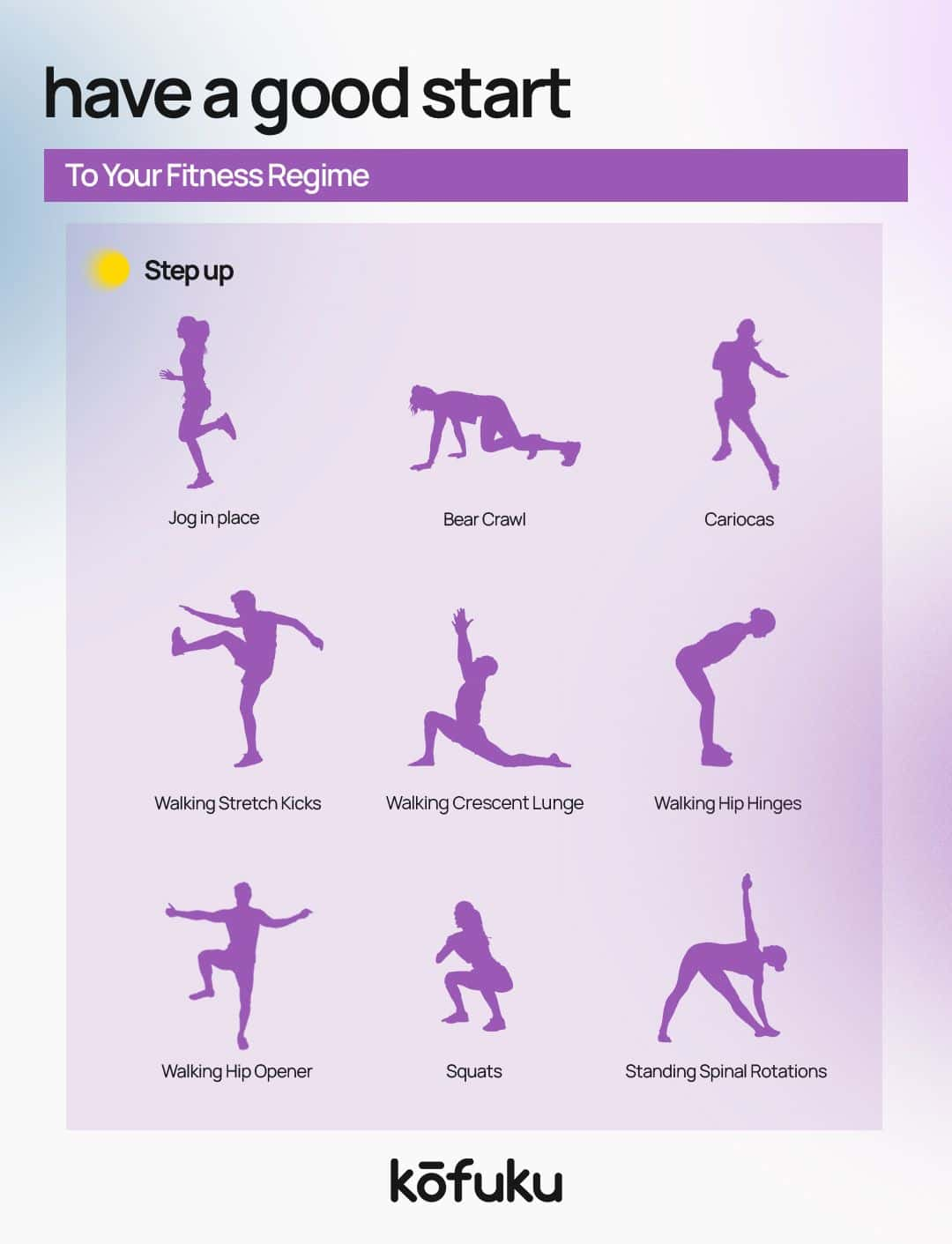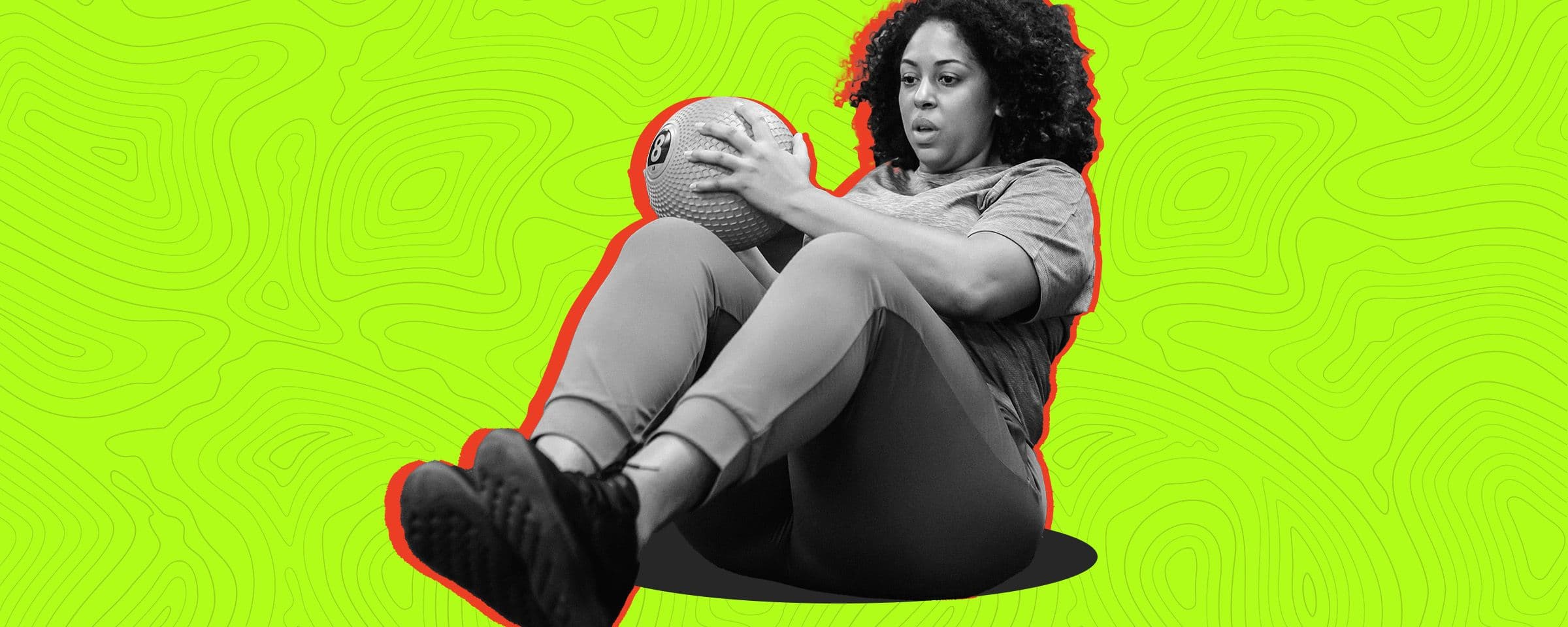Demystifying the RAMP Protocol for Effective Warm-up Techniques

Introduction
If there's one thing in this world that beginner fitness enthusiasts do wrong, it's warm-ups. That thing you probably skip because you're too eager to jump into the main event? Yeah, that one.
We've all been there. But we've redeemed ourselves since then, and we urge you not to walk the same path with the same mistakes we made. Those who cannot learn from history are doomed to become part of it, however, that saying goes.
A solid warm-up isn't just a polite suggestion from your trainer; it's literally the first line of defence, keeping you from pulling some odd muscle and limping everywhere. If you're looking to have a safer and more effective workout, then doing warm-ups is the key.
And not just any old run-of-the-mill method would do, no, we've got a whole new blog talking about the whys and hows. Get ready to be hit with insanely effective warm-up techniques that will become the bread and butter of your fitness journey!
Importance of Warm-Ups
When we say that effective warm-up techniques can change your life, we don't say it without receipts to back it up.
Think of your body as a cold dosa pan. You wouldn't pour the batter in it right away, would you? You'd let the pan warm up, get the oil sizzling, and make sure it's prime real estate for some crispy dosas. That's exactly what a warm-up does for your body!
The Physiology of Warm-Ups
-
Enhanced Oxygen Delivery: A study published in the European Journal of Applied Physiology shows that as your heart rate rises, your blood vessels dilate, delivering more oxygen to your working muscles. This improved oxygen delivery enhances aerobic performance.
-
Synovial Fluid Viscosity Reduction: Synovial fluid within your joints acts as a lubricant. Warming up reduces its viscosity, allowing for smoother joint movement.
Warm-ups Before Exercise
For one, warm-ups prepare your nervous system for the workout ahead, however intense or light it may be. This is especially useful because it improves neuromuscular coordination and reaction time.
Second, it also increases blood flow. And we all know, warmer muscles mean more oxygen and nutrients delivered, which translates to increased performance and reduced fatigue. If you don't, well now you know!
We can't ignore that it also helps with boosting muscle temperature. You might think, what's that gotta do with the benefits of a warm-up, the hotness is a given after all. And to that we say, increased temperature makes your muscles more pliable.
Sports and environmental temperature: From warming-up to heating-up, 2017 proved that increasing muscle temperature, passive or active, can improve muscle function and reduce the risk of injury. Ha! Bet you didn't know that!
Above all, it prepares you mentally for the workout ahead. It's a chance to get in the zone, and focus on your fitness goals which is an equally important part of your routine.

Warm-ups After Exercise (Cool-Down)
A proper cool-down helps your dosa pan keep from burning anyone. And you've gotta follow all the steps meticulously or you risk pouring oil into your sink and killing the rest of the sea life we've got going. Here are some of the ways that a cool-down can help your body after a workout:
-
Gradually reduces heart rate preventing dizziness and lightheadedness.
-
Clear metabolic by-products like lactic acid, reducing muscle soreness that usually accompanies a workout.
-
Promote muscle recovery by repairing and rebuilding muscle tissue.
Warm-ups are so integral to not only your workout routine but also in times of physiotherapy. In fact, it's the first step to recovery after an injury.
What is the RAMP Protocol?
While Jungkook’s warm-up routine is making people go out of breath (and not in a fun way), knowing what fits your lifestyle better is your first order of business.
That is where RAMP protocol comes in! Without complicating your routine further you can follow this neat little thing called RAMP to figure out what is essential and how to make it part of your warmup routine.
RAMP stands for Raise, Activate, Mobilise, Potentiate. It's a systematic approach to warming up that ensures you're hitting all the right notes for optimal performance and injury prevention.
-
Raise: Elevate your heart rate and body temperature.
-
Activate: Engage key muscle groups that will be used during your workout.
-
Mobilise: Increase range of motion and joint mobility.
-
Potentiate: Prepare for high-intensity movements with sport-specific drills.
If your warmup routine can tick all of these boxes, then you can rest assured that you're on the right track.

Science-Based Warm-Up Methods
With the RAMP protocol in mind here are some practical examples to start you with:
1. Raise:
Method: Start with light cardio, like jogging, cycling, or jumping jacks. Aim for a gradual increase in heart rate.
Kofuku Tip: Incorporate dynamic movements that mimic the activity you're about to do. If you're running, start with a brisk walk and gradually increase your pace.
Optimal Warm-up Duration: 5-7 minutes.
2. Activate:
Method: Focus on activating key muscle groups. For example, glute bridges, band walks, or scapular retractions.
Kofuku Tip: Use resistance bands to activate smaller, stabilising muscles. This helps improve joint stability and prevent imbalances.
Optimal Warm-up Duration: 5-7 minutes.
3. Mobilise:
Method: Perform dynamic stretches that increase range of motion. Like leg swings, arm circles, and torso twists.
Kofuku Tip: Focus on joint-specific mobility. If you're doing squats, include hip circles and ankle mobility drills. If you are doing shoulder presses, include dynamic shoulder stretches.
Optimal Warm-up Duration: 5-7 minutes.
4. Potentiate:
Method: Prepare for high-intensity movements with sport-specific drills. For example, sprint drills, plyometrics, or light weightlifting with proper form.
Kofuku Tip: Gradually increase the intensity of your potentiate exercises. This allows your body to adapt to the demands of the workout.
Optimal Warm-up Duration: 3-5 minutes.
5. Progressive Range of Motion Drills:
Method: This involves starting with small, controlled movements and gradually increasing the range of motion. For example, start with small arm circles and gradually increase the size of the circles.
Kofuku Tip: Combine progressive range of motion drills with breathing exercises. This helps improve flexibility and reduce muscle tension.
If you're wondering, what this dynamic movement we keep mentioning is all about, here's a clear distinction to help you out!

Conclusion
So, there you have it: the RAMP protocol, your new gym duo. Though the protocol works for anyone from beginner to athlete, it's still advised to experiment with different exercises and find what works best for you.
Make your warm-up as fun as your workout. Doing effective warm-up techniques is like an investment for getting the best out of your workouts. By taking the time to properly prepare your body, you'll not only reduce your risk of injury but also unlock your own potential.
And let's be real, a good warm-up just feels good! When you do it right, you'll definitely feel it. So, set up a warmup routine to complement your workout routine. Your atrophied muscles will thank you for it!
FAQs
What is the RAMP protocol in warm-up routines?
The RAMP protocol is a dynamic warm-up methodology designed to enhance performance and reduce injury risks. It stands for Raise, Activate, Mobilise, Potentiate, representing the key stages that help prepare the body for intense physical activity.
How does the RAMP protocol differ from traditional warm-ups?
Traditional warm-ups often involve static stretches, whereas the RAMP protocol emphasises dynamic movements and exercises that are more sport-specific. The focus is on gradually increasing the body’s temperature, activating muscles, and improving mobility in a controlled, functional manner.
What does the ‘Raise’ phase of RAMP involve?
The ‘Raise’ phase focuses on increasing the heart rate, body temperature, and blood flow to muscles. This can be achieved through low-intensity aerobic exercises like jogging, cycling, or light jumping exercises to prepare the body for more specific activities.
Why is the 'Activate' phase important in the RAMP protocol?
The ‘Activate’ phase aims to engage and activate the key muscle groups that will be used during the workout or competition. This can include exercises like squats, lunges, or bodyweight movements that target specific muscles to enhance neuromuscular activation.
What does ‘Mobilise’ mean in the RAMP warm-up?
The ‘Mobilise’ phase involves improving joint range of motion and flexibility to ensure that the body can move effectively during exercise. Dynamic stretches, such as leg swings or arm circles, help prepare the joints for the full range of motion required during physical activity.






